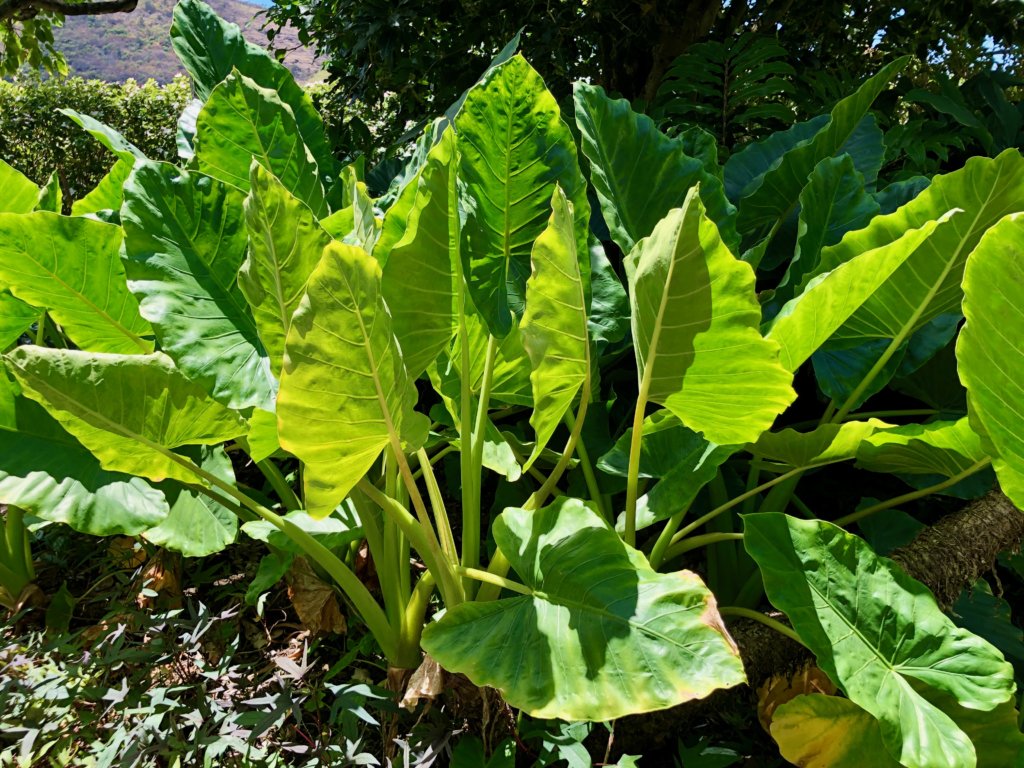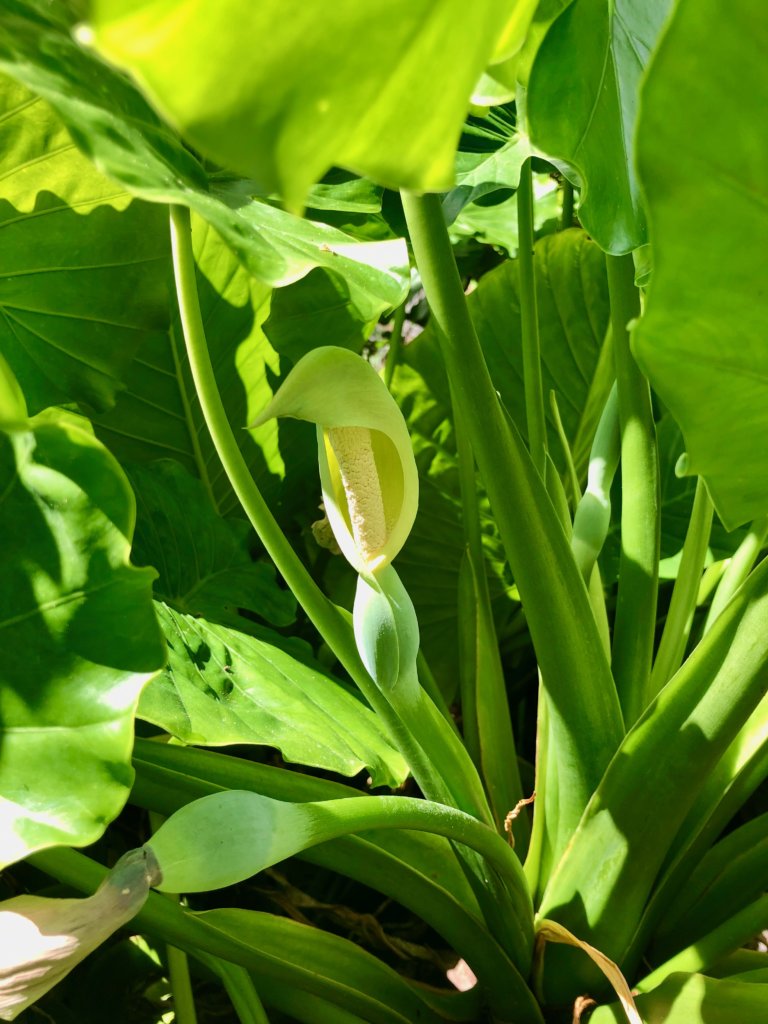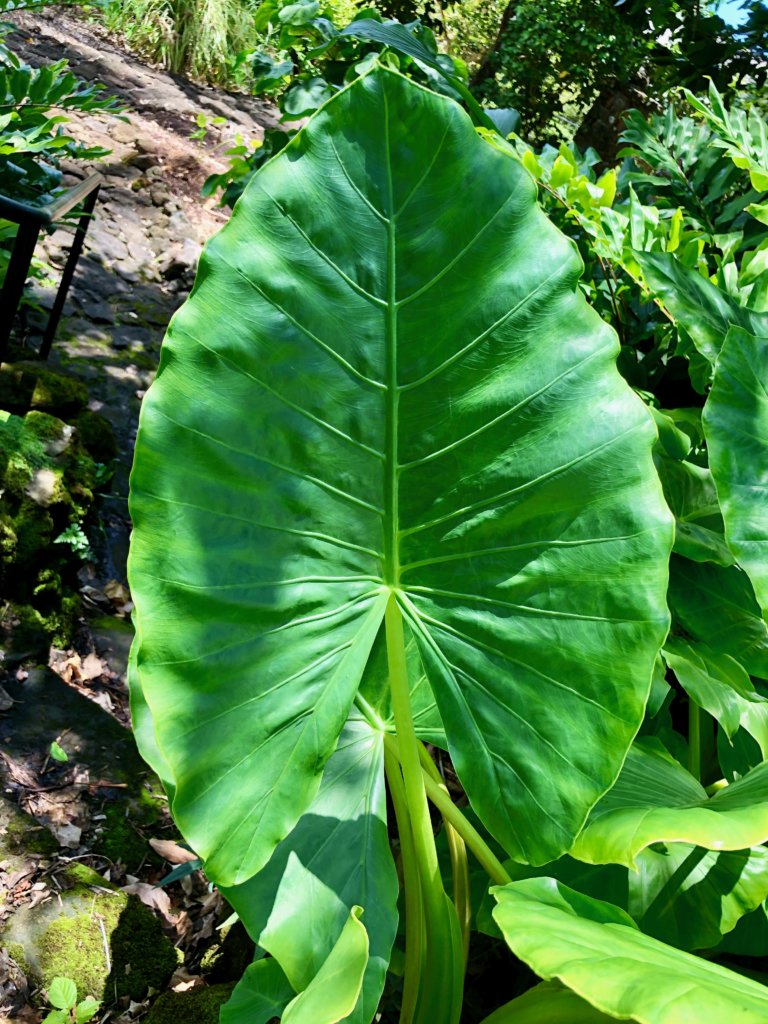ʻApe



Alocasia macrorrhiza
Polynesian Introduction
Located primarily in our Kaʻahaʻaina Garden, ʻApe (ah-pay) has glossy green leaves that can get as large as 5 ft long and 2 ft wide. Able to grow up to 15 feet tall, it can sometimes be mistaken for kalo or taro as they are in the same family and share similar characteristics. Both have a corm underground, similarly shaped leaves, and similar-looking flowers (an open yellow-white tube that encloses a spike covered with flowers). One way to tell apart these look-alikes is by looking at their leaves. ʻApe leaves tend to point skywards whereas kalo leaves point earthward. It grows throughout the Pacific but originated in Southern Asia and was brought to Hawaiʻi as roots by Polynesian voyagers. Other names for this plant are elephant’s ear and giant taro.
Growing
ʻApe grows best in a slightly moist and shady to partially shady area with well-composted soil.
Uses
In early Hawaiʻi, ʻape juice from fresh cut stems was used as a purgative or to relieve irritation from stinging plants such as kō (sugarcane) or nettle; leaves were used as a wrap to induce sweating for fever reduction as it was said the bitter sap would frighten any negative spirits, and meat from the corm was used in treating burns and wounds.*
ʻApe leaves can be a good source of shade when large enough (cut with the stem and you have a natural umbrella) though they were never planted near homes for fear that the residents would get sick. It was, however, planted by gates and fences as it was thought to ward off evil spirits with its irritating sap. ʻApe corms are edible but were only eaten during times of famine as they take much much longer to cook than kalo, containing much more calcium oxalate (the mineral that causes pain and irritation if you eat raw kalo).
*Information found on this website is meant for educational purposes only. It is not meant to diagnose medical conditions, treat any medical conditions, or prescribe medicine.